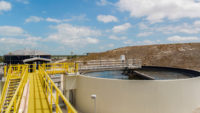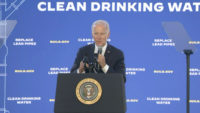The Guam Waterworks Authority has agreed to undergo wastewater system improvements estimated to cost $400 million as part of a consent decree with U.S. officials. The deal is aimed at addressing sewer overflows and other alleged Clean Water Act violations.
The authority is responsible for Guam's drinking water and wastewater systems. Its wastewater system includes 320 miles of gravity sewer and force mains, 82 pump stations and four treatment plants across the North Pacific island U.S. territory. In a complaint filed in federal court in Guam Jan. 31, U.S. Department of Justice lawyers wrote that GWA’s system experienced at least 237 sanitary sewer overflows between January 2018 and September 2021.
In one overflow described in the complaint, about 12,150 gallons of wastewater overflowed from a maintenance hole behind a fire station and streamed to the shoreline. In another, 62,000 gallons of wastewater flowed from a pump station into a river.
GWA also failed to monitor or report monitoring results for about 2,100 parameters over 54 monthly reports to the U.S. Environmental Protection Agency, continuously failed to adhere to operation and maintenance requirements and discharged pollutants exceeding levels allowed by its permits from the EPA more than 2,700 times between August 2013 and September 2021, according to the Justice Dept.
“These exceedances resulted in the addition of thousands of pounds of pollutants to waters of the United States without permit authorization,” the complaint states.
The required work is planned to improve system operation, to better pretreat wastewater to control fats, oils and grease, and to plan for impacts of sea level rise tied to climate change, according to EPA.
Under the consent decree, GWA agreed to submit a plan to EPA for secondary treatment upgrades for its Agaña/Hagåtña Sewage Treatment Plant and plans for repairs at dozens of pump stations. GWA also agreed to complete inspections of its gravity mains, then implement a repair, rehabilitation and replacement program; complete projects upsizing pipes to assure there is adequate capacity for peak wet weather flows; and inventory all its force main segments, then assess them and create an action plan for any needed repairs.
The work covered under the consent decree is essential because of the health and environmental problems sewer overflows can cause, David Uhlmann, assistant administrator for EPA’s office of enforcement and compliance assurance, said in a statement.
“By improving sewer system operations and updating infrastructure, Guam will meet its legal obligations and be better prepared for the major storms that are likely to happen more frequently due to climate change,” Uhlmann said.
GWA did not immediately respond to emailed inquiries about how soon it may seek contractors for the work. The waterworks authority will have years to complete the required improvements, under the terms of the consent decree.






Post a comment to this article
Report Abusive Comment